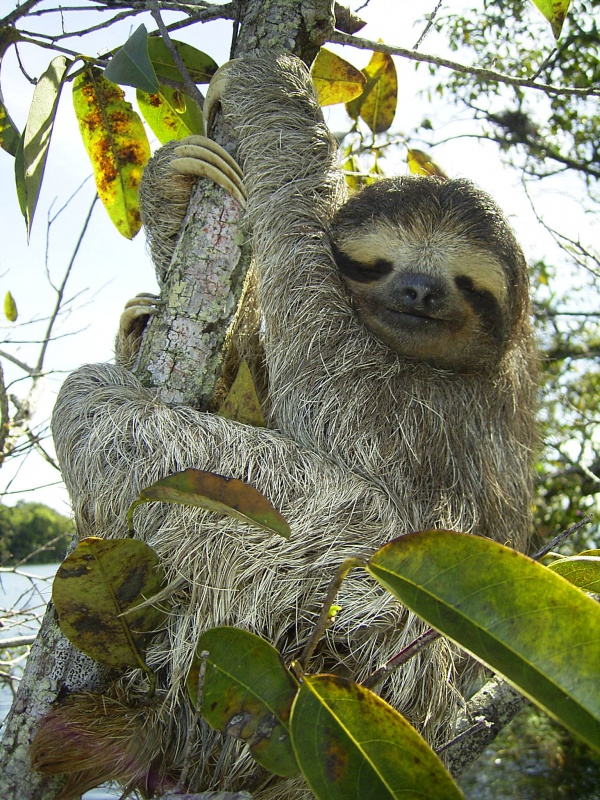Facts About Brown-throated Three-toed Sloth
The brown-throated sloth is a captivating creature native to the forests of Central and South America. As the most prevalent of the four three-toed sloth species, these medium-sized mammals are unmistakable with their rounded heads, blunt noses, and elongated, curved claws. Their fur is a grayish-brown hue, accented with distinctive darker patches on their throats and faces. Notably, their fur hosts algae and fungi, which offer beneficial properties.
Primarily arboreal, brown-throated sloths spend the majority of their time in the forest canopy, feeding predominantly on young leaves. Their exceedingly slow metabolism allows them to sleep up to 18 hours a day. They descend from the trees only to defecate, a behavior that occurs about once a week.
In terms of reproduction, these sloths practice a polygynous mating system, where one male mates with multiple females. After a gestation period of approximately seven months, the female gives birth to a single offspring. The young sloth clings to its mother for several months, beginning to eat solid food at around four to five weeks old.
The range of the brown-throated sloth extends from Honduras to Peru and Brazil, inhabiting various forest environments. In the wild, they can live between 30 to 40 years. During the mating season, they emit loud calls to attract partners. However, they must remain vigilant against predators such as jaguars and eagles.

 Costa Rica
Costa Rica